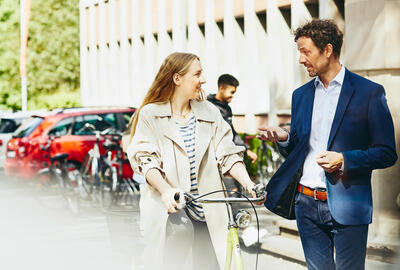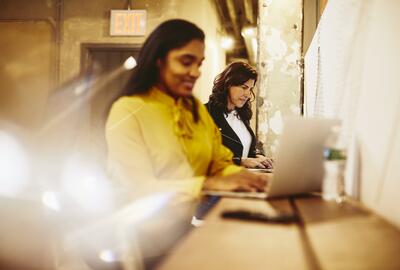Returning to school during the Covid-19 pandemic.
As the country looks to start returning to school after months of remote learning, many teachers, parents and pupils will be asking how do we return to school safely and can we adapt to the Coronavirus pandemic?
The government and the Department for Education’s advice is frequently changing and adapting itself to the latest updates on the COVID-19 situation. We aim to stay up-to-date with their advice, learn from schools who have started to reopen both internationally and nationally and inform you about the best practice of staying safe at school.
Read and watch on for our top tips to keep your staff and pupils safe as we return to school.
Five key ways to stay safe at school
- Carry out a detailed risk assessment
- Adapt your timetable
- Encourage 2m safe distancing where possible
- Create pop up handwashing stations
- Communicate, communicate, communicate
Carry out a detailed risk assessment.
Throughout the period of lockdown, the work and dedication of key workers working with children and young people has been crucial – leaders, teachers, support staff, childcare workers, social workers and others, who have worked tirelessly to support the education and welfare of young people.
It is only right that we ensure that we continue to keep these workers and pupils returning to school as safe as we can. A key way to do this is to carry out a detailed risk assessment of your school or childcare setting before planning any return. Some important things to consider in the risk assessment are:
- The timings of the school day - do these need to be adapted?
- The number of pupils in your school - year group returns are being done in phases, but you may need to consider cutting down class sizes depending on your number of pupils and your site size
- How your staff and pupils travel to school - public transport vs driving, cycling or walking
- Lunchtime - do you have a school canteen? If so, greater hygiene measures will be needed here
- Hand cleaning facilities - do you have enough sinks and/or hand sanitizer stations?
This risk assessment will ensure that sensible measures are put in place to control the obvious risks of returning to school for all parties involved. It will also ensure that your health and safety policies are tailored for your specific school.
Want more information on specific health and safety policies? You may have seen the comprehensive guide we recently put together with Adecco and Manpower on Safely Returning to Work. It even sparked a conversation with our CEO, Jacques van den Broek, on the BBC. In addition to this, we have put together an education specific health and safety checklist to help you cut through the noise and focus on the specific points that are relevant to you.
Click here to download our returning to school checklist
Adapt your timetable.
In other work settings, the government has recommended things like staggering start and finish times, and ensuring that only a small number of people have breaks at the same time.
So, it makes sense to apply this logic to the education sector too. You can:
- Stagger school start and end times for different year groups
- Stagger parent pick up spots to avoid large gatherings of people
- Build time in before and after every lesson to wipe down desks, and wash hands
- Stagger break and lunch times for different year groups - encourage staff and students to bring in a packed lunch in a sealed plastic container where possible
All of these points will work together to protect your staff and pupils alike.
Encourage 2m safe distancing where possible.
Obviously, we can’t guarantee that primary school pupils will be able to maintain 2m social distancing rules at all times. With this in mind, it’s important to minimise contact where possible, to ensure that staff and pupils are kept as safe as possible across all year groups. Ways to do this include:
- Arranging classrooms so that desks are far apart
- Put 2m distance marks in corridors and communal areas
- Encourage the use of outdoor space where possible
In addition to this, it is important to ensure that your premises staff are clued up with the latest health and safety information on keeping your school site well managed. You can read our full article on facilities management during Covid-19, and some top tips on keeping your school building hygienic are below:
- Raise humidity above 40%, maintain warm temperatures and clean thoroughly - generally, viruses thrive in cold, dry conditions
- Restrict visitors to essential only
- Screen visitors before entry - temperature checks
Install pop up handwashing stations.
Whether it’s singing happy birthday in your head twice, or counting out loud while you wash your hands, it’s important to ensure both staff and pupils are regularly washing their hands to maintain good hygiene.
To make sure that everyone can do this safely, it’s a good idea to install pop up hand sanitizing stations in classrooms, staff rooms and corridors. This will ensure that everyone will get the chance to wash their hands between lessons, and will avoid long queues for bathrooms.
It is also recommended that all classroom equipment is wiped down between usage, so it is a good idea to keep a supply of sanitising wipes in every room.
Communicate well and often.
All staff must be informed of the latest updates about their requirements for coming into school. Whether they are on furlough, working from home or you are looking for new staff, the guidance decided for your school will need to be relayed to them quickly and efficiently.
This is the same for pupils and parents - they need to be aware of your action plan for returning. This will not only provide reassurance that pupils will be safe, but will also help make the transition back to the classroom a smooth one.
Our top tips for communication are as follows.
- Clear, consistent and regular communication
- Check for accurate email addresses and phone numbers
- Listen to feedback
Communication is a two-way street, you need to hear from your employees as well as tell them what they need to be doing to stay safe. If staff, pupils and parents are concerned about their health or are classed as at risk what can you do to support them? Think of everything from physical to psychological to financial concerns, and ensure you are ready to support everyone where you can.









